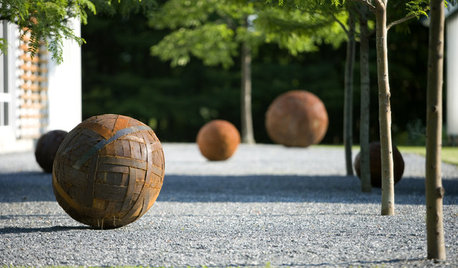No dig garden - I can't find alfalfa hay! What should I do?
organic_wonderful
13 years ago
Featured Answer
Comments (10)
organic_wonderful
13 years agoRelated Professionals
Palm Springs Landscape Architects & Landscape Designers · Taylorsville Landscape Architects & Landscape Designers · Maple Heights Landscape Architects & Landscape Designers · Ashburn Landscape Contractors · Cordele Landscape Contractors · Davis Landscape Contractors · Haverhill Landscape Contractors · Seymour Landscape Contractors · Tamarac Landscape Contractors · Tyngsboro Landscape Contractors · Quartz Hill Landscape Contractors · North Hills Landscape Contractors · Boston Decks, Patios & Outdoor Enclosures · Chicago Decks, Patios & Outdoor Enclosures · Jupiter Decks, Patios & Outdoor EnclosuresKimmsr
13 years agoflora_uk
13 years agoKimmsr
13 years agoflora_uk
13 years agocoachgrumpy
13 years agojolj
13 years agoKimmsr
13 years agoJenny Williams
8 years ago
Related Stories

DECORATING GUIDESThe '70s Are Back. Can Ya Dig It?
No need to cringe. These 21 groovy blasts from the past are updated to look fabulous today
Full Story
LIFEYou Said It: ‘Just Because I’m Tiny Doesn’t Mean I Don’t Go Big’
Changing things up with space, color and paint dominated the design conversations this week
Full Story
GARDENING GUIDESGarden Myths to Debunk as You Dig This Fall and Rest Over Winter
Termites hate wood mulch, don’t amend soil for trees, avoid gravel in planters — and more nuggets of garden wisdom
Full Story
THE POLITE HOUSEThe Polite House: Can I Put a Remodel Project on Our Wedding Registry?
Find out how to ask guests for less traditional wedding gifts
Full Story
HOUSEPLANTS8 Houseplants You Can't Kill
They're forgiving and let you forget. Houseplants don't get any easier than this
Full Story
LIFEThe Polite House: How Can I Kindly Get Party Guests to Use Coasters?
Here’s how to handle the age-old entertaining conundrum to protect your furniture — and friendships
Full Story

LANDSCAPE DESIGNKoi Find Friendly Shores in Any Garden Style
A pond full of colorful koi can be a delightful addition to just about any landscape or garden
Full Story
GARDENING GUIDESHow I Learned to Be an Imperfect Gardener
Letting go can lead to a deeper level of gardening and a richer relationship with the landscape. Here's how one nature lover did it
Full Story
LANDSCAPE DESIGNWhat Kind of Gardener Are You? Find Your Archetype
Pick from our descriptions to create a garden that matches your personality and tells your story
Full StoryMore Discussions








flora_uk